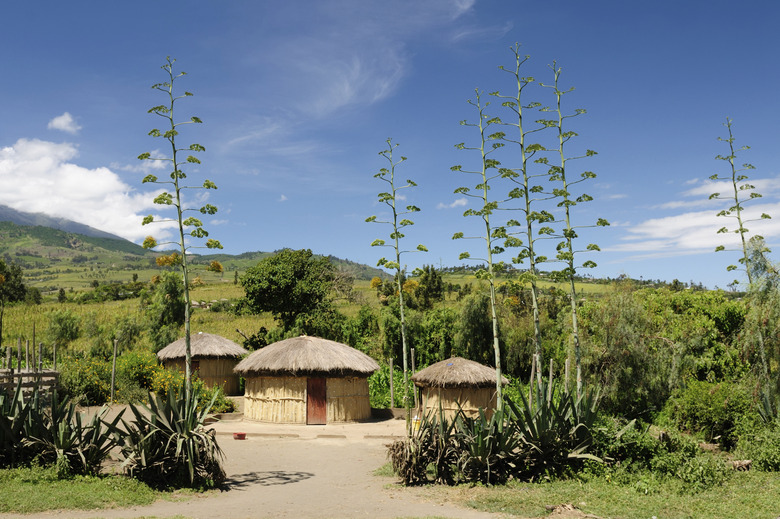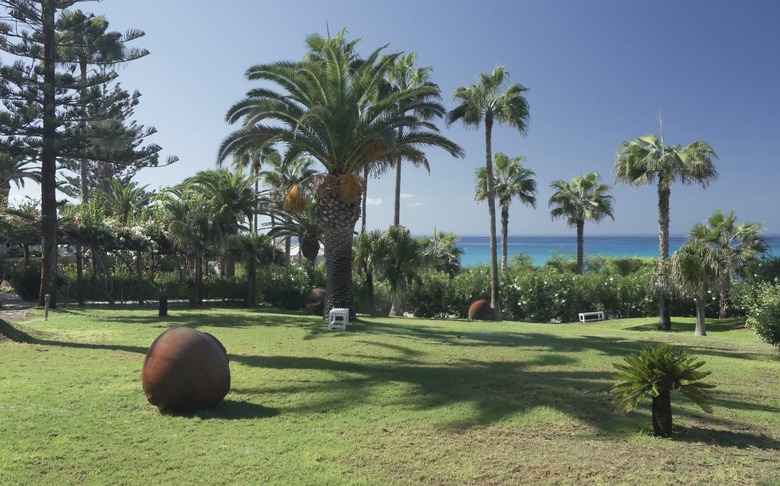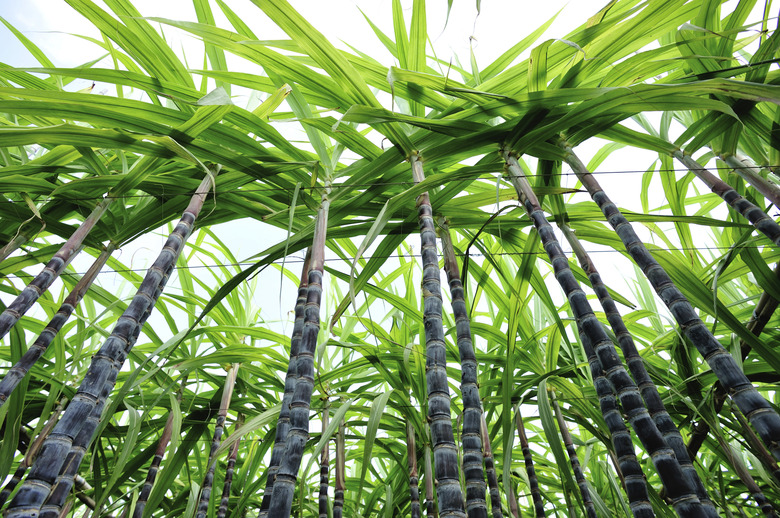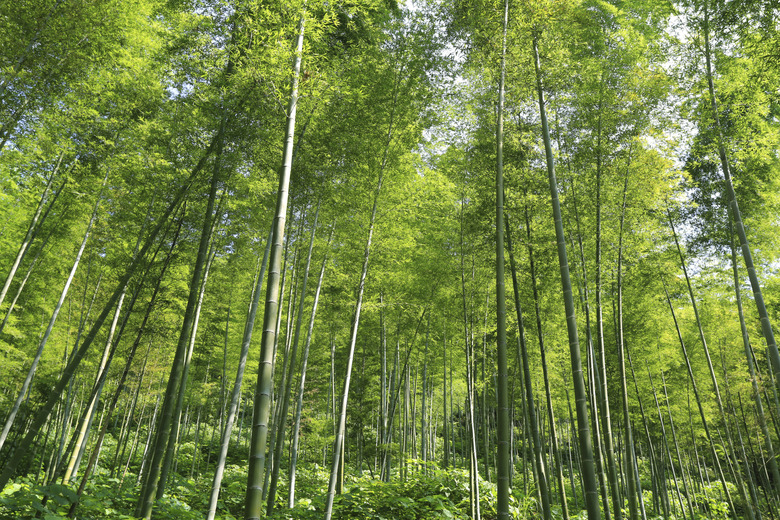Types Of Tropical Grass
Tropical grasses — whether they come from the semiarid savannas of Africa, Asia, Australia or India, or wetlands and forests — also grow in the right climates in the U.S. Types include low-growing sod grasses, clumping grasses and large reed-type grasses. The largest tropical grasses are bamboos, which can reach 60 to 100 feet tall.
Lawn Grasses
Lawn Grasses
Sod-type grasses grow low to the ground and spread by lateral runners to form matlike growth, which makes some of them useful as lawn grasses. If you live in a mild winter climate, you're probably familiar with Bermuda grass (Cynodon dactylon), a widely used lawn grass that grows in U.S. Department of Agriculture plant hardiness zones 7 through 10. Native to Africa, Bermuda grass has many cultivars bred for lawns and has invasive tendencies in some locations. Another group of tropical sod grasses typically used for lawns, zoysia grasses (Zoysia spp.) are hardy in USDA zones 5 through 10 and are native mostly to Asia. A third tropical lawn grass commonly used in coastal warm winter areas, St. Augustine grass (Stenotaphrum secundatum), grows in USDA zones 8 through 10.
Clumping Grasses
Clumping Grasses
Clumping grasses grow in mounded shapes to heights that vary depending on the species. When the clumps outgrow the space you have for them, dig them up and divide them. A tropical clumping grass with dramatic purple color and arching leaves, "Prince Napier" grass (Pennisetum purpureum "Prince") grows 5 to 6 feet tall and wide in USDA zones 8 through 11. A tropical clumping grass native to India, lemongrass (Cymbopogon citratus) has lemon-scented green leaves that turn red to purple in fall and winter. Hardy in USDA zones 10 through 11, lemongrass can become invasive. Grow it in a container to restrict its growth.
Cane Grasses
Cane Grasses
Cane grasses have thick, hard stems and usually grow more than 10 feet tall. Sugarcane (Saccharum officinarum), which is thought to have come from New Guinea, grows in USDA zones 8 through 11 and is the source of cane sugar. For an ornamental grass, the variety "Pele's Smoke" (Saccharum officinarum "Pele's Smoke") has purple stems and smoky purple leaves and is suitable for containers, as long as the container has drainage holes. Another cane grass with ornamental foliage is variegated giant reed (Arundo donax "Variegata"). Pale yellow and green striped leaves grow on stems that can reach 15 feet or more. Because this is a potentially invasive plant, grow it in containers so it doesn't spread. It grows in USDA zones 7 through 10 and tolerates most soil types as well as wet areas.
Tropical Bamboo
Tropical Bamboo
Tropical bamboos usually have noninvasive, clumping growth habits rather than spreading by runners as do most temperate bamboos. An example of a clumping, tropical bamboo, Mexican weeping bamboo (Otatea acuminata aztecorum) grows 15 to 20 feet tall and 2 to 3 feet wide in USDA zones 9 through 11. Check the bamboo type carefully before you plant it to make sure it won't grow out of control.
References
- Tropical Grasses; P. J. Skerman and Fernando Riveros
- American Bamboo Society: Bamboo Species List
- YardCare: Warm-Season Grasses
- U.S. Forest Service: Cynodon Dactylon
- Monrovia: Prince Napier Grass
- University of Florida IFAS Extension: Cymbopogon Citratus
- Kew Royal Botanic Gardens: Saccharum Officinarum (Sugar Cane)
- Online Plant Guide: Saccharum Officinarum/Sugar Cane
- Online Plant Guide: Arundo Donax "Variegata"/Variegated Giant Reed
- Cincinnati Magazine: Bountiful Bamboo




